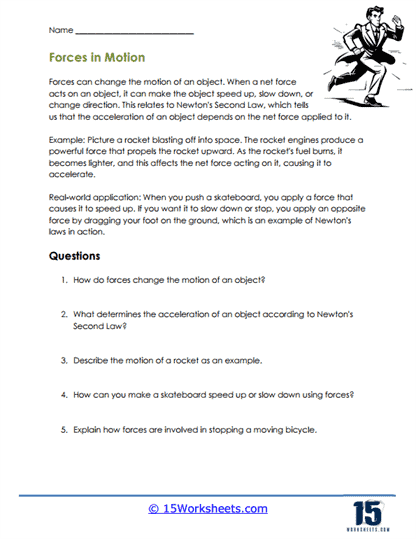Forces in Motion

Worksheet Description
The worksheet looks into the impact of forces on an object’s movement. It explains that the application of a net force on an object can alter its speed, direction, or both. By referencing Newton’s Second Law, the worksheet links the net force applied to an object to its acceleration. Additionally, illustrative examples like the launching of a rocket and the dynamics of skateboarding further illuminate these principles.
To master the understanding of how forces influence motion, one must first comprehend that an unbalanced force can instigate or modify movement. Observing everyday scenarios, like pushing a skateboard, can help one see the practical effects of applied forces. To accelerate an object, a force in the direction of the desired movement should be applied; conversely, applying a force opposite to the direction of movement can decelerate or stop the object. Continuous observation and experimentation can further enhance one’s grasp of these dynamics.
This worksheet aims to impart a foundational understanding of the relationship between force and motion. Through Newton’s Second Law, students are taught that the acceleration of an object is directly proportional to the net force acting upon it and inversely proportional to its mass. By presenting tangible examples like rockets and skateboards, the worksheet aspires to bridge theoretical concepts with real-world applications. Ultimately, the goal is to equip students with the ability to predict and interpret the effects of forces on various objects in motion.
